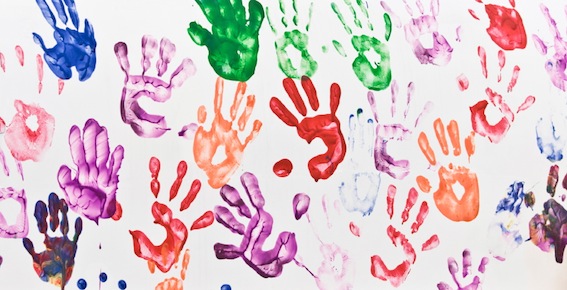Art Supplies: How to Keep Creativity Safe
A little after my daughter turned 1, we introduced her to crayons. It took a little while to figure it out, but pretty soon she was drawing on any piece of paper she could find. She was also eager to move beyond crayons, quickly recognizing that she could uncap any pen, marker, or highlighter she found around the house and draw with it. I realized that not only was my furniture at risk, my daughter was also likely at risk from some of the supplies we had all too accessible around the house.
Children Hannah’s age and even older still put everything in their mouths, or even if they do not do that directly, they will certainly be putting their fingers in their mouths after everything they touch. With Halloween coming up, many families will try to get creative with costumes, decorations, and jack o’lantern designing. We urge you to keep your kids around the most safe and natural products possible while still engaging in creative activities.
Labeling:
Keep in mind that just because a product is labeled “non-toxic” doesn’t mean that you would want to use it around your children. The federal labeling act, LHAMA, mandates that products list acute or chronic health effects, but does not require manufacturers to include an ingredient list. Try to find suppliers that include ingredients voluntarily.
ACMI, the art and creative materials initiative, is made up of art supply manufacturers who volunteer to have their products tested for toxicity. The labels “AP” or “CP” will appear on products that are approved, though again, neither guarantees it will meet your own standards. For example, many clays contain the AP label, but also contain PVC and phthalates, known endocrine disruptors. Do not purchase anything with a caution label on it, as kids never use a product “as directed”.
Avoid altogether anything with a Proposition 65 label. This is California’s labeling standard, known to be one of the strictest when it comes to carcinogenic and reproductive toxins.
Paints:
- Of primary concern are chemical solvents, like methyl alcohol and toluene, which are toxic if swallowed and are used to help paint spread evenly
- Use water-based water colors and tempera paints
- Avoid gel acrylics that can contain ammonia and formaldehyde
Glue:
- Avoid rubber cement or model glues
- Rubber cement contains the neurotoxins hexane or heptane
Crayons:
- Most are made of paraffin, a petroleum product
- Look for crayons made of soy
Markers:
- Look for an AP symbol if you must use markers instead of crayons or pencils
- Even water based markers can contain alcohol which releases vapors.
- Permanent markers can contain toxic solvents like xylene
Our suggestions:
Use natural products available found here:
Or create your own:
Homemade Finger Paints:
Mix 1 cup of cornstarch, 1/2 cup of water, and 1/3 cup of soap flakes (melted in ½ cup of boiling water) with juice dyes.
Here is how to create your own colors. Combine plant material with one cup of water in a pan and simmer over low heat until water evaporates down.
- Blue: blueberries and red onion skins
- Brown: walnut hulls, paprika
- Green: oak bark, crab apple leaves, and bark
- Orange: yellow onion skins, oats
- Purple: purple grapes
- Red: cranberries, beets
- Yellow: Apple tree bark, white onion skins, turmeric
Resources:
- www.greenamerica.org
- www.healthychildhealthyworld.org
- www.watoxics.org


